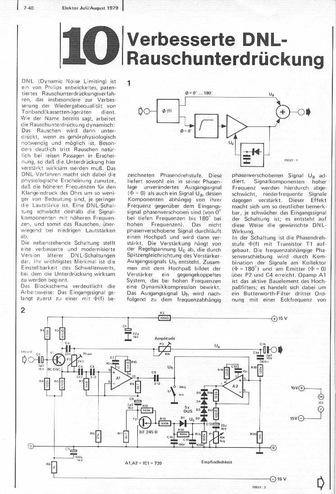Rausch-Unterdrückung DNL

Dies ist ein NUR FÜR MITGLIEDER-Artikel. Um diesen Artikel lesen zu können, benötigen Sie ein Abonnement.
- Unbegrenzter Zugriff auf Member Only -Artikel
- 3 neue Ausgaben des Elektor Magazins (digital)
- Mehr als 5000 Gerber-Dateien
- 20% Mitgliederrabatt auf E-Books (auf elektor.de)
- 10% Mitgliederrabatt auf Produkte (auf elektor.de)
Erhältlich ab 6,33 € pro Monat.
Was ist Members Only
Elektor engagiert sich dafür, hochwertigen Inhalt rund um Elektronik bereitzustellen und betreut dabei zehntausende zahlende Mitglieder. Als Teil dieses Engagements hat Elektor das Premium-Angebot ins Leben gerufen, das exklusiven Zugriff auf ausgewählte Artikel bietet – manchmal sogar bevor diese in der Zeitschrift erscheinen.
Täglich können Mitglieder fundierte Artikel entdecken, die das Beste aus Elektors Premium-Content präsentieren und speziell darauf abzielen, ihr Wissen und ihre Begeisterung für Elektronik zu vertiefen.
Mit dem Premium-Programm will Elektor seiner Community aus Enthusiasten frühzeitigen Zugang zu aktuellen Projekten und Erkenntnissen ermöglichen. Nach dem Einloggen genießen Mitglieder diesen exklusiven Inhalt und können sich über spannende Projekte und Innovationen austauschen. Während Premium unser bestehendes Angebot erweitert, wird Elektor weiterhin eine Fülle an kostenlosen Informationen für die breite Community bereitstellen.
Werden Sie Teil der Elektor-Community und nutzen Sie Premium sowie weitere Mitgliedervorteile!


Diskussion (0 Kommentare)